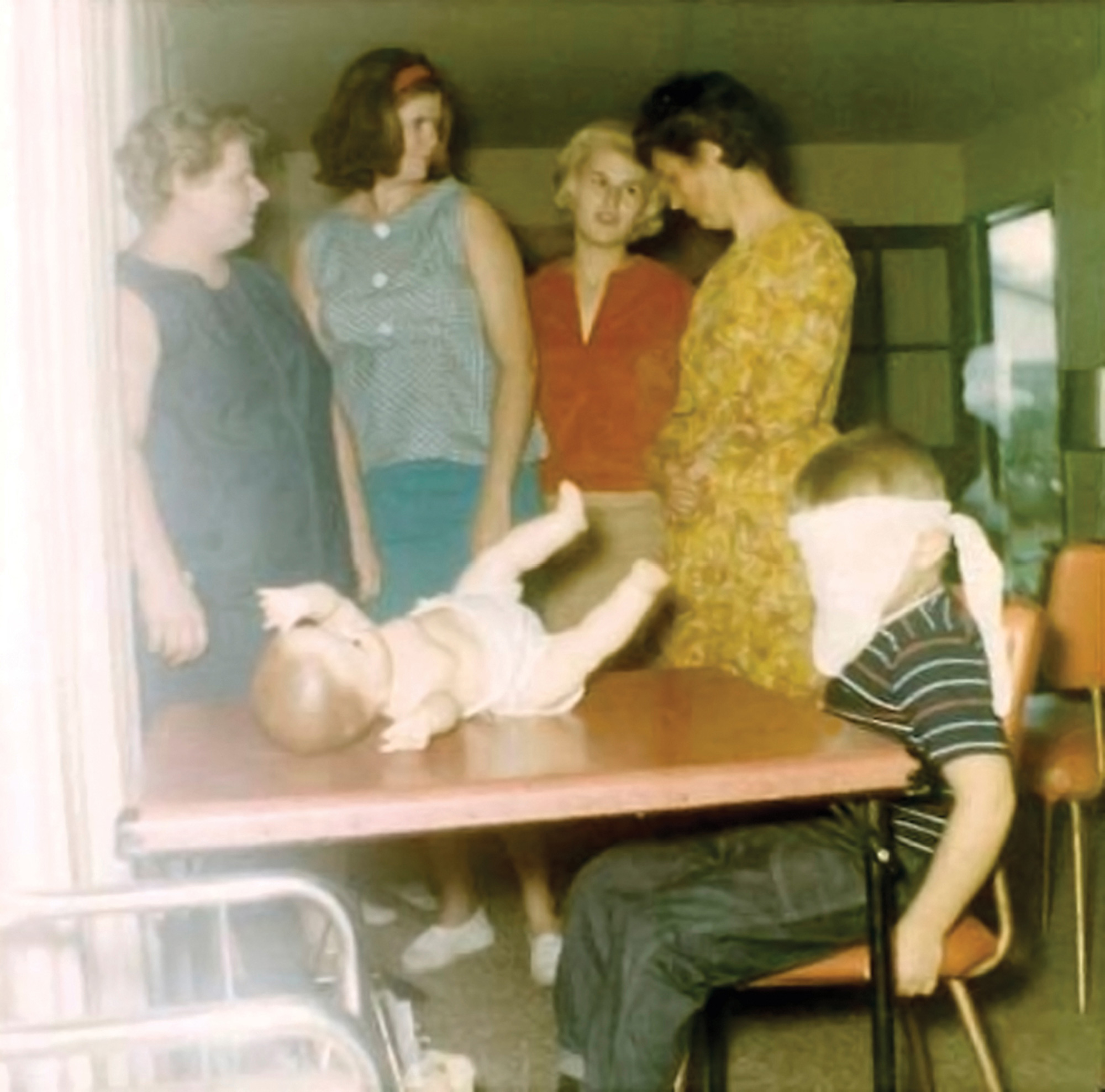Legend / The Pregnant Blindfold
Nothing to see here
Wayne Koestenbaum
“Legend” is a column by Wayne Koestenbaum in which he suggests one or more possible captions for an image provided by the editors of Cabinet.

The blindfolded boy can’t peer up a doll’s diaper to see Mattel genitals.
Four looming women, discipline-oriented, momentarily ignore the lad. Absorbed in Satanic parley, they give him privacy.
The tallest chaperone wears a maternity shift and a headband. Her shift’s three white buttons create compositional drama.
I’m a sucker for buttons, and for triangulation.
Seeing buttons, I experience an optimistic surge of inward (intestinal? pre-orgasmic?) stimulation. Three buttons in a row make me yearn for an inebriated life, a destiny more volcanic than the staid path I now pursue.
Threesomes—three buttons—bring to mind the straight young man, a Bacchus-haired, baritonal Jew, who blew me a few decades ago, despite his girlfriend’s propinquity.
Clearly I’d rather escape into sexual reverie than decode buttons on a blouse. Will I be punished for misidentifying it as a maternity shift?
A blindfold prevents the boy (unlike a viewer of Duchamp’s Étant donnés) from glimpsing treasurable vista.
Overexposure—the photo’s washed-out, chartreuse atmosphere, as if anaesthetized by perestroika’s remoteness—reflects a gloom attached to Sunday afternoons.
Do blindfolds excite or terrify the deprived eye?
No panic can germinate in a room whose colors refuse to articulate identity. If green will not declare itself green but will waver in the pusillanimous middle ground of polluted chartreuse, then panic lacks berth.
Yesterday a painter and I tempestuously discussed the relation of green to rage.
He served me hyssop tea.
Mentioning tea makes me feel like Lydia Davis. Not that she would include hyssop tea in her exquisite fictions. But my insistence on mentioning tea (rather than anuses) pays homage to a style I’d practice if I possessed tact.
I asked each student in my art-writing seminar to select, from Walter Pater’s The Renaissance, a single word that appealed to them or catalyzed rumination, however errant. One student chose penetrate. Another chose pregnant.
The boy’s blindfold is “pregnant with the possibilities of a whole world closed within it,” according to Pater, who insists, bossy queen, on having the last word.
Wayne Koestenbaum, a Distinguished Professor of English at the CUNY Graduate Center, has published fifteen books of poetry, criticism, and fiction, including Humiliation (Picador, 2011), The Anatomy of Harpo Marx (University of California Press, 2012), and Blue Stranger with Mosaic Background (Turtle Point Press, 2012). In fall 2012, the first exhibition of his paintings will be held at White Columns gallery in New York.